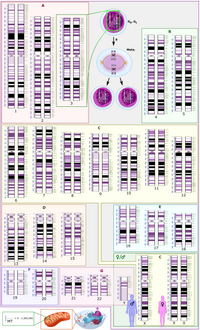
Photo from wikipedia
Over the past quarter-century, environmental DNA (eDNA) has been ascendant as a tool to detect, measure and monitor biodiversity (species and communities), as a means of elucidating biological interaction networks,… Click to show full abstract
Over the past quarter-century, environmental DNA (eDNA) has been ascendant as a tool to detect, measure and monitor biodiversity (species and communities), as a means of elucidating biological interaction networks, and as a window into understanding past patterns of biodiversity. However, only recently has the potential of eDNA been realized in the botanical world. Here we synthesize the state of eDNA applications in botanical systems with emphases on aquatic, ancient, contemporary sediment, and airborne systems, with focus on both single-species approaches and multi-species community metabarcoding. Further, we identify how abiotic and biotic factors, taxonomic resolution, primer choice, spatiotemporal scales, and relative abundance influence the utilization and interpretation of airborne eDNA results. Lastly, we explore several areas and opportunities for further development of eDNA in plants, advancing our knowledge and understanding of the efficacy, utility, and cost-effectiveness, and ultimately facilitating increased adoption of eDNA analyses in botanical systems. This article is protected by copyright. All rights reserved.
Journal Title: American journal of botany
Year Published: 2023
Link to full text (if available)
Share on Social Media: Sign Up to like & get
recommendations!